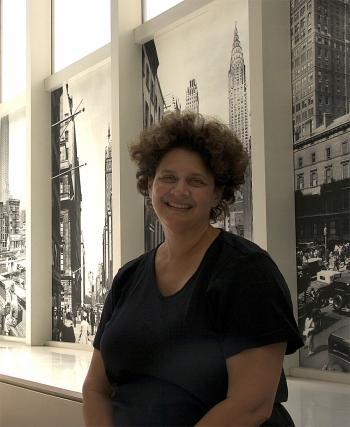NEW YORK—A collection of iconic photographs by groundbreaking photographer Alfred Stieglitz depicting New York’s transformation into a modern metropolis during the early 20th century is now on display at the Sea Port Museum at the South Street Seaport.
Legendary for his impact on the art world, Stieglitz, husband of painter Georgia O’Keefe, was a pioneer in the use of photography to create fine art and a great supporter of the modernist movement, which he promoted in his galleries.
“It was a time when people were trying to make an artistic vision of New York,” explained exhibit curator, Bonnie Yochelson.
Legendary for his impact on the art world, Stieglitz, husband of painter Georgia O’Keefe, was a pioneer in the use of photography to create fine art and a great supporter of the modernist movement, which he promoted in his galleries.
“It was a time when people were trying to make an artistic vision of New York,” explained exhibit curator, Bonnie Yochelson.
Stieglitz chronicles the early 1900s with images of horse-drawn buggies shrouded in mist, an asphalt machine, and the construction of the first skyscrapers penetrating the New York skyline.
The exhibition is divided into three chronological periods of Stieglitz’s career, and displayed to resemble his own galleries, of which Gallery 291 is most well known.
The first period of works, from 1892 to 1906, displays a picturesque aesthetic style in which dusk, mist, and snow overlay the artist’s subject matter.
The exhibition is divided into three chronological periods of Stieglitz’s career, and displayed to resemble his own galleries, of which Gallery 291 is most well known.
The first period of works, from 1892 to 1906, displays a picturesque aesthetic style in which dusk, mist, and snow overlay the artist’s subject matter.
“Stieglitz fulfills his own need to make his pictures about him as much as the city,” said Yochelson of Stieglitz’ aesthetic.
Among the photos from Steiglitz’s second period is one of his most famous, “The Steerage.”
Often misunderstood as an image of immigrants arriving in New York, it actually depicts immigrants returning to Europe, explained Yochelson, an author of many works on photography.
In 1930, Stieglitz began focusing on the construction of skyscrapers, including the G.E. Tower and the Waldorf Astoria. These were “enormous new structures bigger than anything anyone had seen before,” explained the curator.
When Stieglitz married artist Georgia O’Keefe, the couple moved into an upper-level room at the Shelton Hotel on Lexington and 49th. Stieglitz, in his 60s at this point and with failing health, preferred to take photos from the window of this, and other rooms where he took up residence.
A final room in the exhibition seeks to put Steiglitz’s work in context by contrasting it with a variety of works from his contemporaries, including well-known New York photographers Paul Strand, Lewis Hine, and Bernice Abbot, as well as some lesser-known artists. Three short films, including one by Thomas Edison, add interesting visual dimension and perspective on the period.
Among the photos from Steiglitz’s second period is one of his most famous, “The Steerage.”
Often misunderstood as an image of immigrants arriving in New York, it actually depicts immigrants returning to Europe, explained Yochelson, an author of many works on photography.
In 1930, Stieglitz began focusing on the construction of skyscrapers, including the G.E. Tower and the Waldorf Astoria. These were “enormous new structures bigger than anything anyone had seen before,” explained the curator.
When Stieglitz married artist Georgia O’Keefe, the couple moved into an upper-level room at the Shelton Hotel on Lexington and 49th. Stieglitz, in his 60s at this point and with failing health, preferred to take photos from the window of this, and other rooms where he took up residence.
A final room in the exhibition seeks to put Steiglitz’s work in context by contrasting it with a variety of works from his contemporaries, including well-known New York photographers Paul Strand, Lewis Hine, and Bernice Abbot, as well as some lesser-known artists. Three short films, including one by Thomas Edison, add interesting visual dimension and perspective on the period.








